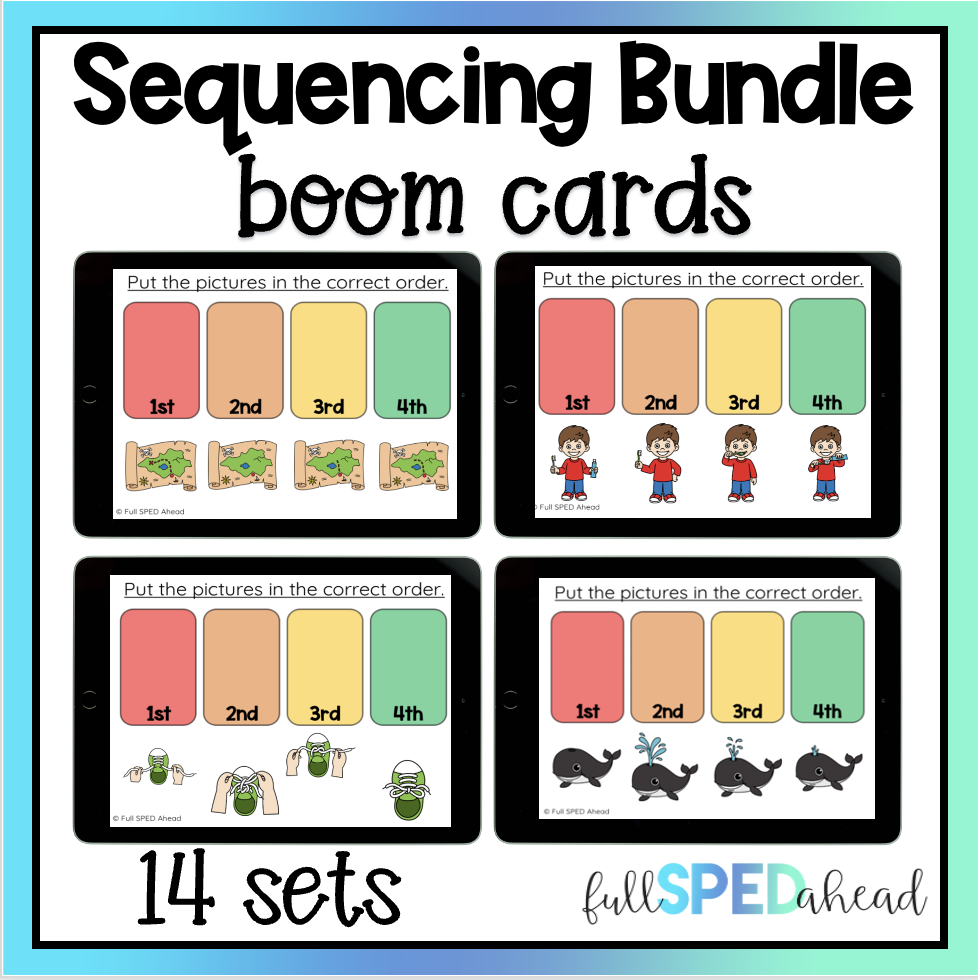Sequencing is putting items or events in order. In special education, we may use phrases such as “First, Then” or “First, Next, Then” to let students know the order in which something will happen. We often use this when a student will be receiving a reward or motivational activity at the end. Sequencing helps our students know what will happen next. A predictable routine helps our students throughout their day.
These skills are essential for children’s cognitive development and academic success. By understanding and organizing information in a logical order, students can improve their comprehension, critical thinking, and problem-solving abilities. Teaching skills in the classroom provides students with a foundation for understanding patterns, making connections, and grasping the concept of cause and effect. In this blog post, we will explore the importance of teaching sequencing skills and share effective strategies and activities to incorporate into your classroom.
In special education, students need to be able to do a routine in a specific sequence. They also need to understand that certain events need to happen before other events. For example, in cooking, students need to take the ingredients out of the refrigerator before they can eat.
As stated before, this can help students understand when their reward is coming or the end of the activity is coming. We also use sequences in hygiene and grooming routines. From washing hands, brushing teeth and getting dressed, our students use sequencing.
Here are a few activities to help practice sequencing with your students from fun to functional, these sets have everything you need to show pictures and put them in the correct order! My students love doing these activities as reinforcing skills or motivating practice!
Teaching sequencing skills in the classroom is crucial for students’ cognitive development, critical thinking, and overall academic success. By incorporating strategies such as visual supports, hands-on activities, technology integration, and real-world applications, educators can provide meaningful opportunities for students to develop and strengthen their sequencing abilities.
These skills will not only benefit students academically but also equip them with essential life skills that promote organization, planning, and effective communication. As educators, let us embrace the power of sequencing instruction to unlock the full potential of our students and set them up for lifelong success overall.
The set below focuses on fun tasks such as reading a treasure map, animals, and sports!
You can also grab these 3 sets in a complete bundle below!

Sequencing is a fundamental skill that plays a crucial role in various aspects of life, including education. In the context of special education, teaching sequencing skills is particularly important as it helps students develop their cognitive abilities, language skills, and problem-solving capabilities. Sequencing involves understanding and organizing events or information in a logical order or sequence.
By teaching sequencing, educators can help students improve their comprehension, critical thinking, and communication skills. Through activities such as sequencing stories, steps in a process, or events in a timeline, students learn to recognize patterns, make connections, and understand cause-and-effect relationships.
These skills are essential for academic success, as well as for daily tasks and routines. By incorporating sequencing activities into their lessons, teachers provide valuable opportunities for students to develop their cognitive and organizational abilities while fostering their overall learning and development.
Instagram | TeachersPayTeachers | Facebook | Boom Learning Library | Pinterest | Youtube
What are you looking for?
COPYRIGHT © 2025 Full SPED Ahead